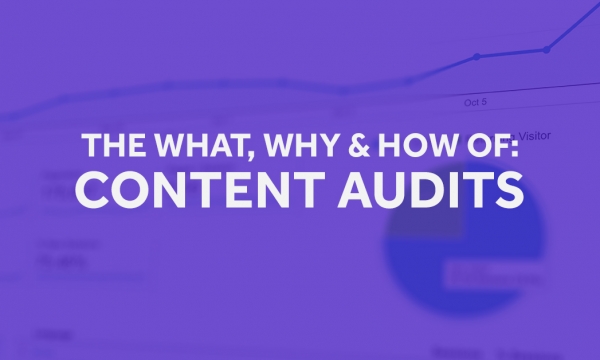You’ve come up with a fantastic creative idea, only for it to be chipped away by stakeholder after stakeholder. What’s left is a very different idea from the one that you were passionate about. So how do you prevent “idea dillution”?
You’ve consumed the brief, dug into the data, and researched the industry extensively so you can provide a piece of work - be that written content, engaging graphics or even a whole new website – that’ll have a massive impact and provide big results.
The next challenge – getting those who matter to not only buy into your big idea but also to help guide this initial concept through to the real world intact.
Along the way there are many factors and hurdles that could dilute your initial grand designs – reducing its impact and effectiveness. There’s nothing worse than seeing the final product go live and realising how far you’ve strayed from the initial concept.
But it doesn’t need to be this way. Through stakeholder management, extensive planning and collaborative working with other agencies involved, you can make sure your big plan makes it to the wider world intact.
It starts with a great idea…

Everyone wants to deliver their best work, every time – whether pitching for new work, developing a new internal strategy or putting together a big creative project.
But this version is just one version – at the early stages you’re often not working alongside clients, other departments or external agencies. For example, if you’re pitching for new work, you might not be aware of the technical limitations of the website, what their internal compliance rules are, or who will eventually be signing off the actual deliverables.
If you’re going in hoping that some visual panache will bring the ‘wow’ factor, you might be in for a long hard road ahead. Any idea should always – even at this early stage – have a reason for existing beyond simply impressing a room full of people.
At concept stage, you should be able to fully explain why this new piece of work should be exactly as you’re created it – why it’ll add value, provide great ROI etc.
The idea slowly starts to drift

Even if you’ve planned every element, used the data to laser-focus your content to the core audience, and pitched an idea that’s within budget and executable en masse, there are many factors that can impact the initial concept’s effectiveness and cause things to drift:
- Time and money. You might well be tempted to put in more hours to a piece of test content than you would be willing to do so when it comes to actual delivery. Consider whether this idea can be delivered in bulk and on time. Bear in mind that you may also be dealing with external imposed deadlines that might not have been revealed at this stage.
- Technicals. This can be a tough one, as you might not have working knowledge of the website the piece of work will be sitting on at this early stage – especially if you’re working with a new company or potential client. What you create to win a contract can become all but useless if it turns out the website can’t host it due to technical issues.
- Personnel. Just because you’ve impressed a room full of people with your pitch, it doesn’t mean it’ll be the same people handling the contract. And they might have a different idea of what they want.
- Compliance. Most companies have their own round of amends and legal checks that could impact the final product. Many of these are based on the industry they’re operating in, but these checks can vary from company to company.
- Interpretation. Even if everyone is happy for you to deliver your grand idea, getting it created in bulk can often dilute the concept as you bring in various writers, designers, agencies etc who might interpret your brief in their own way.
How to stop the drift.

To keep your concept as pure as you can, consider the following:
Plan for the end product
Always have an eye on the reality of delivery when pitching. Yes, it’s a bit like trying to predict the future, but you should have a fairly good idea of what your colleagues can and can’t manage.
Talk with your internal teams to make sure what you’re putting forward is actually deliverable – do the teams have capacity, the skill sets, software etc. This can help you to spot issues early.
And talk with the end client – find out as much as you can about their timelines, technical issues and personal so you can deliver something realistic.
Managing the risks and handling the objections
While we like to see ourselves as creatives, a big part of our job is people management. Especially when it comes to companies who might get cold feet when faced with the prospect of spending large sums of money.
Risk management is hugely important. You have to be able to show that your approach not only has the least amount of risk, but will also provide a great ROI. You need to be able to show a dazzling piece of work – but also how that piece will impact their bottom line.
Manage the stakeholders
A big part of risk management is stakeholder management. Remember, you’re not just talking about one stakeholder but a number - from brand managers to MDs. You need to be able to get them all on board with your idea by showing them why the idea works best in its original version.
As soon as the stakeholders start to have doubts, they’ll start to pick away at your concept – whether to reduce cost, make it more palatable for the rest of the stakeholders or, simply, because they don’t understand what you’re trying to achieve.
Remember, the person who signs off your work might not be the person in charge of the final deliverables – you might have to get a whole new department to buy into your idea. Find your KPIs so you know what you’re being judged against – and then show how your concept will smash those KPIs.
A clear and in depth brief
Once you’ve got the stakeholders on board and fully bought into your idea, you need to make sure your own team can deliver it as originally envisioned.
This starts with a clear and in depth brief – not just on paper but in person. Immersion sessions to get everyone on the same page are great tools.
Then you need to be crystal clear as to what each department is expected to do and by when. Create timelines, set to-do lists, hold regular meetings – whatever works best for you and your team to keep everyone on track and focussed on the original plan.
Be clear with not just what you want, but also why you want it. If you can show those who will be creating and delivering the work why certain aspects are important, they will buy into it more than if you just tell them it’s important.
Be hands on
If this is your baby, you’ve got to be like a parent and help it grow from conception to adulthood. Be hands on at every stage. It doesn’t matter if you’re not a designer, writer or video expert – you’ve got to be there to answer questions and provide feedback to all departments to keep things on track.
This means not only briefing in other departments in your company, but being hands on with external agencies, freelancers etc - checking in on them and steering them back towards the original goal when things start to drift. Getting these people to buy into your idea is just as important as getting stakeholders on board.


